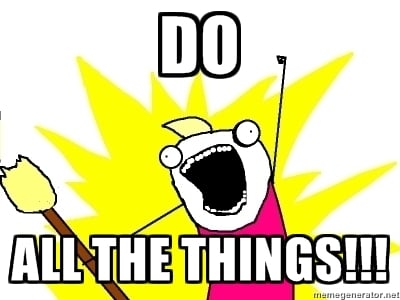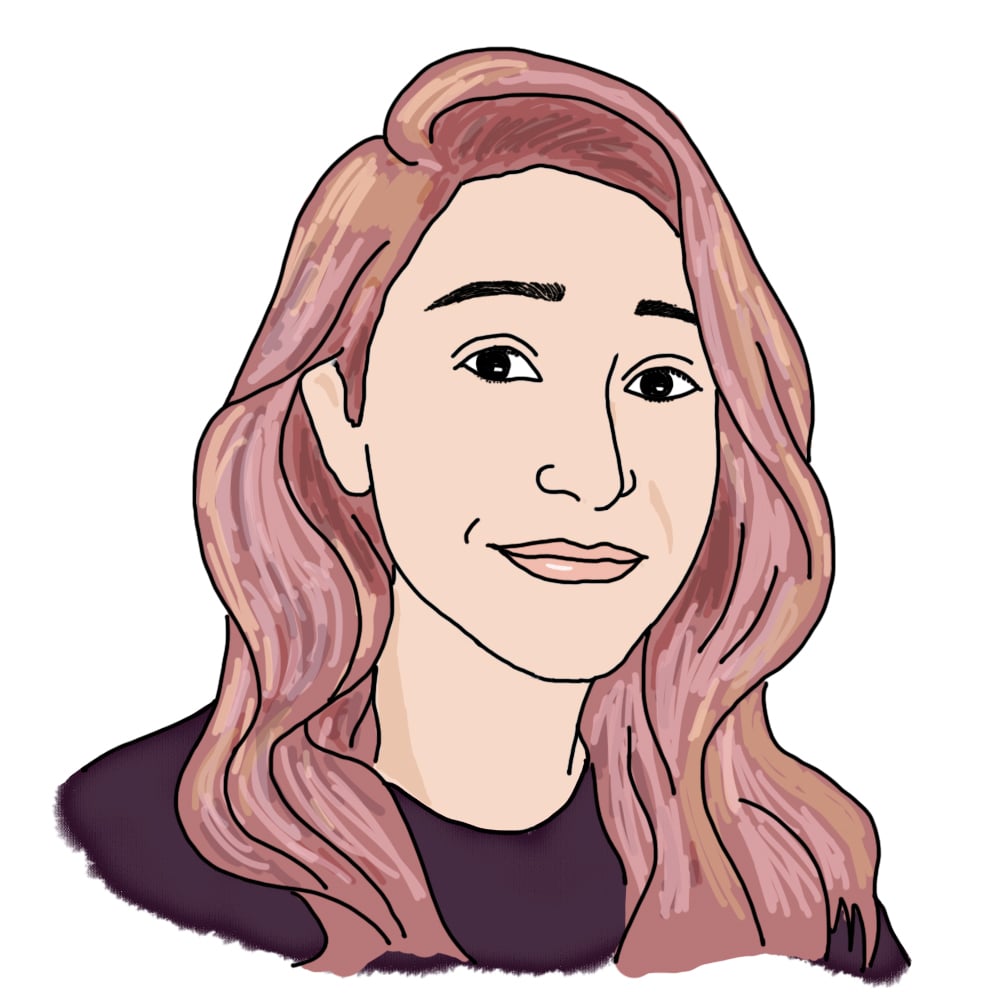
Science Out Loud! by Ceri R. '16
On teaching/making/producing educational videos and why it's so much fun
I think I’ve accidentally begun a quest to be involved with ALL THE (VIDEO) THINGS on campus, from MITx to TAing the ESG educational video course to becoming a Educational Media/Multimedia Fellow for the MIT+K12 Videos Program.
That last one might sound a little familiar to the blogosphere.
The MIT+K12 Videos Program is managed (and executive produced) by blogger alum Elizabeth C. ’13. She created the web series Science Out Loud to tap into the knowledge/expertise/enthusiasm of MIT students and make STEM topics more accessible and exciting to a K-12 audience. And Science Out Loud is how fellow blogger Anastassia B. ’16 made her awesome video about plant metabolomes.
So, as a MIT+K12 Videos Fellow, I’ve been working on various projects involving educational/digital media literacy, outreach, and production. We also have a blog, where I’ll be writing about my experiences as a Fellow. Like I said, doing ALL THE (VIDEO) THINGS.
Have I posted this before? I think I’ve posted this before.
1) Teaching
During IAP, I was a teaching assistant for the very first time. Elizabeth taught a course called 20.219: Becoming the Next Bill Nye, which fellow blogger Yuliya K. ’18 took by crazy random happenstance. (Three generations of bloggers in one room?! Crazypants.)
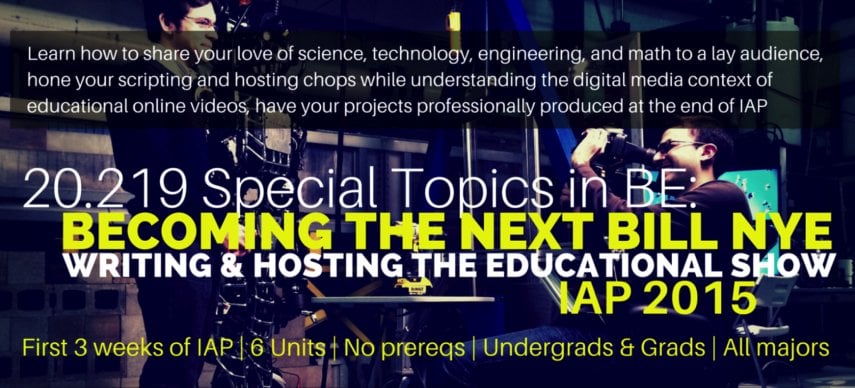
Over the course of three weeks, a group of seven students (from MIT undergrads to grad students to Sloan fellows to Singapore University of Technology and Design undergrads) learned basic scripting, hosting, and video production skills. Along the way, they developed some digital media literacy – what I would argue is the biggest takeaway from this class, because more digital media literacy means better video content being produced – and created a final video project in the style of a Science Out Loud episode.
It was a class that I loved helping out with and would have LOVED to take if I was unfamiliar with online video. Elizabeth and I share a lot of the same values when it comes to educational video production, and she structured the course so that students could think critically and discuss about what makes a good video (because best practices don’t really exist yet) BEFORE they jump headfirst into making their own. I think that a lot of people underestimate the amount of work that goes into video production – “any MIT student can sit in front of a camera and talk about science!” – so it was really great to see students push themselves and each other (through peer critiques) to make the best project iterations possible.
Some major takeaways from the class?
- “In writing, you must kill your darlings” – a Faulkner quote that was basically our mantra during the ideation period, scriptwriting, editing, etc. If you’re going to tell a compelling story, you have to revise and revise and revise and can’t become too attached to any one idea. Which is easier said than done.
- Listen to Ira Glass – He talks about the gap between having good taste and being able to produce creative work that you think is good. It’s frustrating, especially when you know you can identify what you like or don’t like about a video but can’t quite emulate that in your own projects. But you can’t keep improving without making things and actively trying to get better.
I made a class Tumblr where people made daily blog posts, in case you’re curious about the types of assignments they did or what the final projects looked like. You can even read my daily reflection posts, if you want, or track any other student’s progress throughout the class.
2) Writing & Hosting
I’ve always been more comfortable behind the camera than in front of it, which is part of why my vlogging experiment for the Admissions Blogs is so helpful. (Let’s ignore the fact that I’ve been the opposite of Batman recently and haven’t vlogged in a while. Community, anyone?)

So when Elizabeth asked if I wanted to be part of Science Out Loud Season 3, I hesitated mightily. But she convinced me to give it a shot because most everyone has reservations about hosting. While everyone in 20.219 was working on their videos, I was also researching and writing a video script that evolved (after several iterations and a lot of feedback from part of the Science Out Loud team aka. Elizabeth and George) into a script on regeneration – why some lizards can regrow limbs, why humans can’t regrow arms, and why scientists are currently studying human livers because the liver is the only organ that can regrow large amounts of cells in vivo and still form functional tissue.
We filmed my video over the course of two days. Day 1 involved an 8:30am call time in Building 68 (not the Koch, but the bio department’s home base), a road trip to a Jabberwock reptiles (I geeked out so hard over all the lizards and snakes and amphibians and very nearly wanted to adopt a gecko and take her home), a trip back to the B-Entry lounge in MacGregor to film with some cow livers, and recording voiceover of all my lines in a conference room inside the Office of Digital Learning. For me, it was probably an 11 or 12 hour day, but my only real responsibility was memorizing and delivering lines. Not to mention the fact that Elizabeth and George and Adam (our cameraman and lighting expert) stayed a little longer to unload and charge equipment and go over the plan for shooting the next day.
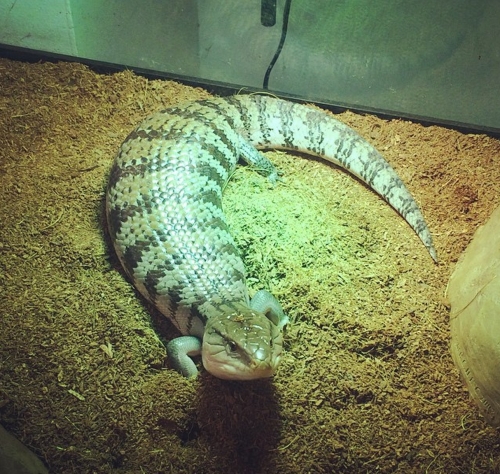
Blue-tongued skink!
Day 2 was a lot shorter for me (even though it was just as long for the rest of the crew, because they were working with another student). We had contacted my previous UROP mentor/20.109 lab instructor, Shannon, to see if we could film in the tissue culture room of the Course 20 teaching lab so we wouldn’t be in anyone’s way and no long-term experiments were going on (as opposed to every other lab in campus, which have busy grad students working). So I got to dust off all of my rusty tissue culture skills, since I hadn’t worked in a lab for about a year at that point, and deliver a couple final lines for my video.
My only real responsibility as a host was memorizing and delivering lines. I say ‘only,’ but that has a connotation that acting is easy – acting is very, very tiring and hard but also kind of fun if you push past your reservations. But I’m so curious about video production and this was my first time on anything like a ‘real’ set, so I tried to learn as much as possible while we were filming my video. I badgered the crew with a couple questions and offered to set up lights or wrap cables and learn what different pieces of equipment did. Which is, I think, how I ended up talking to Elizabeth about helping out with some other shoots as a production assistant.
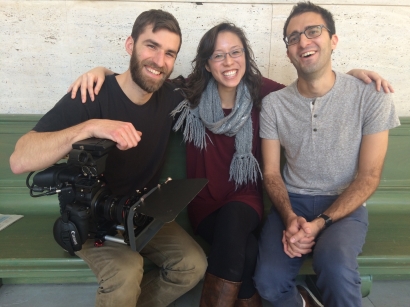
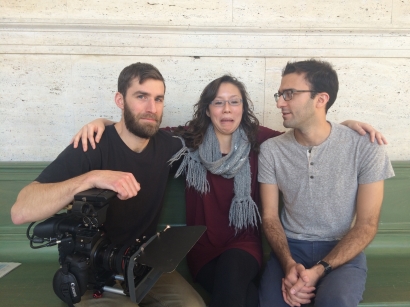
The amazing and derpy Season 3 team. (I’m not sure they know I have these pictures but I was in the group text sooo…)
3) Being a Production Assistant
[FYI this bit is shamelessly reposted, with a couple tweaks, from the MIT+K12 Fellows Tumblr. Still my writing; I’m just happy with how it sounds.]
On the morning after filming my video, I wandered through the slushy streets of Cambridge in search of jawbreakers. 1 hour and 4 stores later (La Verdes, Shaws, CVS, and Walgreens), I was carrying a bag full of multi-colored off-brand ‘jaw-busters,’ a box of Gobstoppers, and a novelty-size rainbow lollipop. Apparently jawbreakers, while iconic, are hard to sell so nobody keeps them in stock.
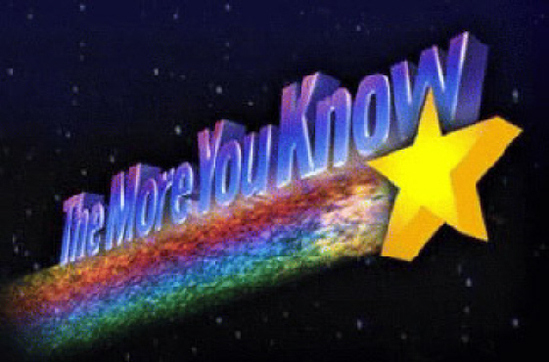
So why, exactly, was I on an epic quest for a specialized candy product? The Science Out Loud crew was filming a video on bone remodeling (think: what happens to your teeth when you get braces) with Andrea, one of the students from 20.219, and needed jawbreakers as a prop. And, as a temporary production assistant, these are the kinds of errands that fell under my job.
A production assistant (PA) as Wikipedia defines it, is “a member of the film crew and is a job title used in filmmaking and television for a person responsible for various aspects of a production.”
Basically, that means a PA is there to help out with whatever the most urgent needs of the production are. I did everything from:
- Buying lunch for the talent and crew
- Picking up a welding mask
- Acting as a temporary camera holder
- Taping jackets over windows (lighting quick fixes)
- Taking pictures of the locations before we moved stuff
- Moving stuff
- Setting up lights
- Adjusting lights
- Tracking down tripods
- Sneaking pictures of the shoot (see below)
- Wrapping cables
- Unwrapping cables
- Executing a super-dramatic lighting cue (translation: pushing a button)
- Writing down notes about the various takes
- Meeting a pizza guy and bringing food upstairs
The last two were probably the most important. (All jokes aside, writing notes on the different takes is incredibly useful for post-production, especially for the editor, and was genuinely one of my most important jobs that day.)
While it may not sound like the most glamorous job, I had an absolute blast. It kind of reminded me of being a stage manager, where your role is pretty much to make things run as smooth as possible, minus the yelling at actors bit. And it was a totally different experience from being in front of the camera.
When I was hosting, my main job was to memorize lines and keep up my enthusiasm and drink tons of water to make sure my voice didn’t die (my voice likes to die because I rarely talk for long periods of time… presentations are a struggle). But when I was a PA, I could ask all the questions I wanted about the lighting setup and camera setup and why clothespins are called C47s. Most of the time, though, I felt silly asking (or didn’t know what to ask) and just observed what George (the director) and Adam (camera/lights) were doing or helped out wherever I could.
Even though I was only on set for 6ish hours, I learned SO many practical things that you can’t quite grasp without being on a film (online video?) set – even though I’m sure I could read plenty of lighting theory about tips to creating an artificial mid-afternoon, there’s nothing comparable to watching/helping a lighting designer adjust color temperatures and beam widths until the shot looks just right.

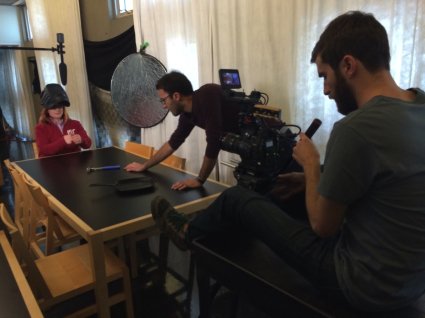
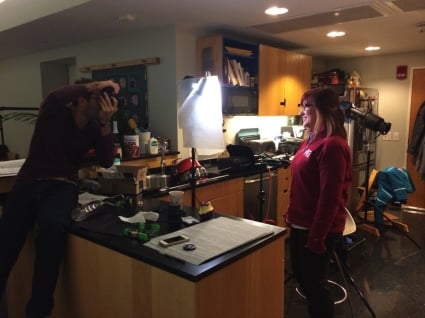
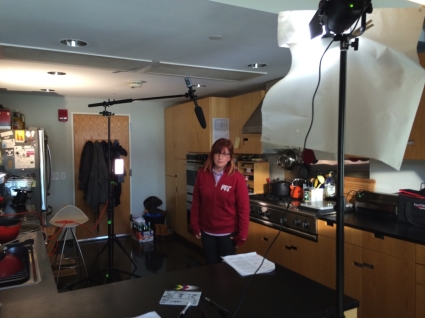
Like, this is how the magic happens. These are the same basic principles that go into filming your favorite TV show or the next blockbuster movie, only on a much smaller scale. These are the things that I want to learn, but MIT will never offer a class on (except kind of in the theater department, but even their classes are more design-oriented than practical/get-your-hands-dirty sometimes) because that’s not what this Institute’s about.
Sigh.
(This is one of those times where I really think I should’ve gone to a liberal arts or film or art school instead.)
Self-reflection aside, being a production assistant for Science Out Loud was one of the coolest experiences I’ve had in relation to MIT. Hopefully they’ll need me again in March during reshoots (even though that probably means the shoot is complicated or something is very logistically stressful).
And I guess this ties into what I want to accomplish this semester with the Fellowship (which, in turn, ties into what I want to accomplish in life possibly-maybe-who knows). I want to make cool things and do more cool things, whether those things involve writing blog posts or making videos or being on a film set or thinking critically about educational videos and digital media literacy. I think I’m tired of taking classes where I can’t actually apply the material or don’t feel motivated/inspired to pursue it further. It’s kind of making me stir-crazy.
But I really enjoy what MIT+K12 Videos is doing, I really enjoy Science Out Loud, I really enjoy advocating for good content creation and the importance of digital media. So I think this should be a great couple of months.
